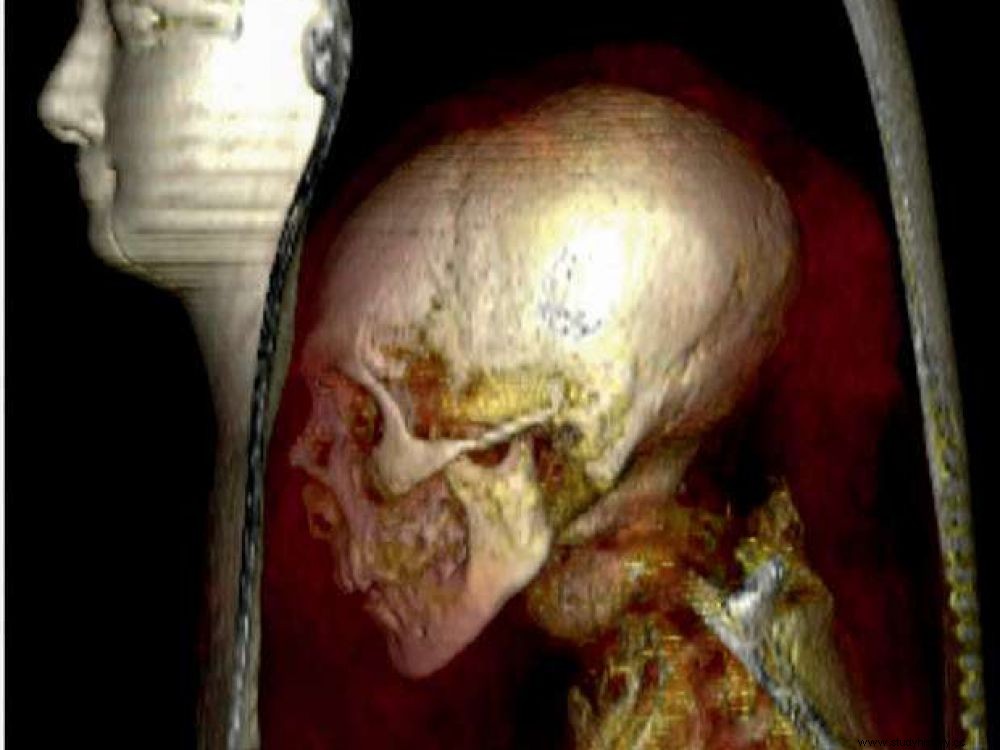Philippe Charlier, archaeo-anthropologist and director of the research and education department at the Musée du Quai-Branly-Jacques-Chirac, talks about the fascinating mummy of Amenhotep I.

Not a single strip was removed from the mummy of Amenhotep I.
This article is taken from the monthly magazine Sciences et Avenir - La Recherche n°902, dated April 2022.
Sciences et Avenir:Will we ever be able to discover the cause of the death of Amenhotep I?
Philippe Charlier: Amenhotep I did not suffer from any identifiable pathology, this does not mean that he was in good health. He could have died of pneumonia or pancreatic cancer. Before vaccines and antibiotics, infections were the leading cause of death. To find out, we would have to study the soft tissues. But the viscera that have been removed constitute essential missing parts.
This article is taken from the monthly magazine Sciences et Avenir - La Recherche n°902, dated April 2022.
Sciences et Avenir:Will we ever be able to discover the cause of the death of Amenhotep I?
Philippe Charlier: Amenhotep I did not suffer from any identifiable pathology, this does not mean that he was in good health. He could have died of pneumonia or pancreatic cancer. Before vaccines and antibiotics, infections were the leading cause of death. To find out, we would have to study the soft tissues. But the viscera that have been removed constitute essential missing parts. Today, the mummy underwent the most successful examination. Adding a fibroscopy would perhaps make it possible to obtain its DNA like that of potential infectious agents.
Will we still be able to scan the mummy without damaging it?
Yes, the rays do not physically degrade the mummy. But they can damage DNA a bit, which is hard to get from Egyptian mummies. The rays could also disturb carbon-14 dating, but the problem does not arise for Amenhotep I, whose reign is well identified.
How does this approach change research on mummies?
Their study is endless. The scanner, for example, makes it possible to reconstruct the face of the deceased in a realistic way, from the features of the surface of the skull. For this, it is necessary to superimpose stereotyped thicknesses of skin, muscles, adipose tissue on a bone surface, from thousands of forensic observations on the dead. The part of uncertainty relates to the color of the eyes, the type of hairstyle or the color of the skin, when one cannot make microscopy nor define the concentration of the melanin pigments. The limit consists in wanting to give an expression, whereas a total neutrality is essential. This is not art but scientific work.
